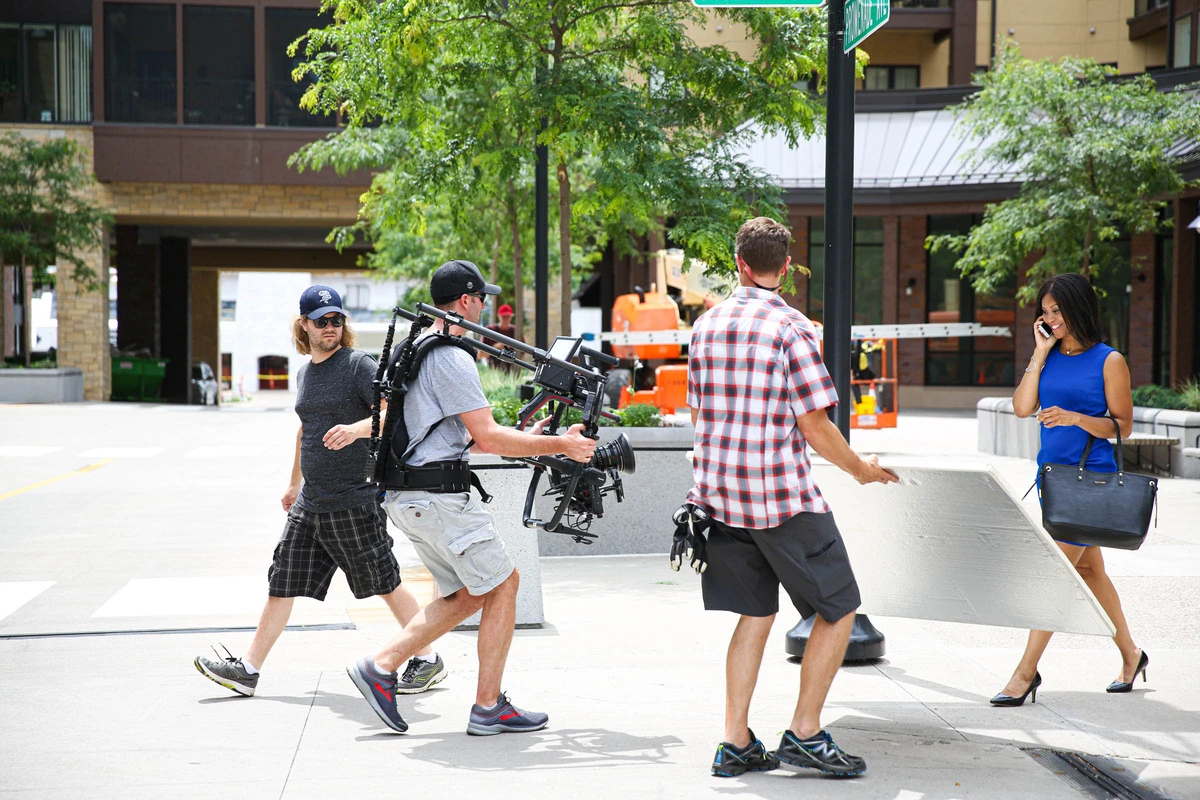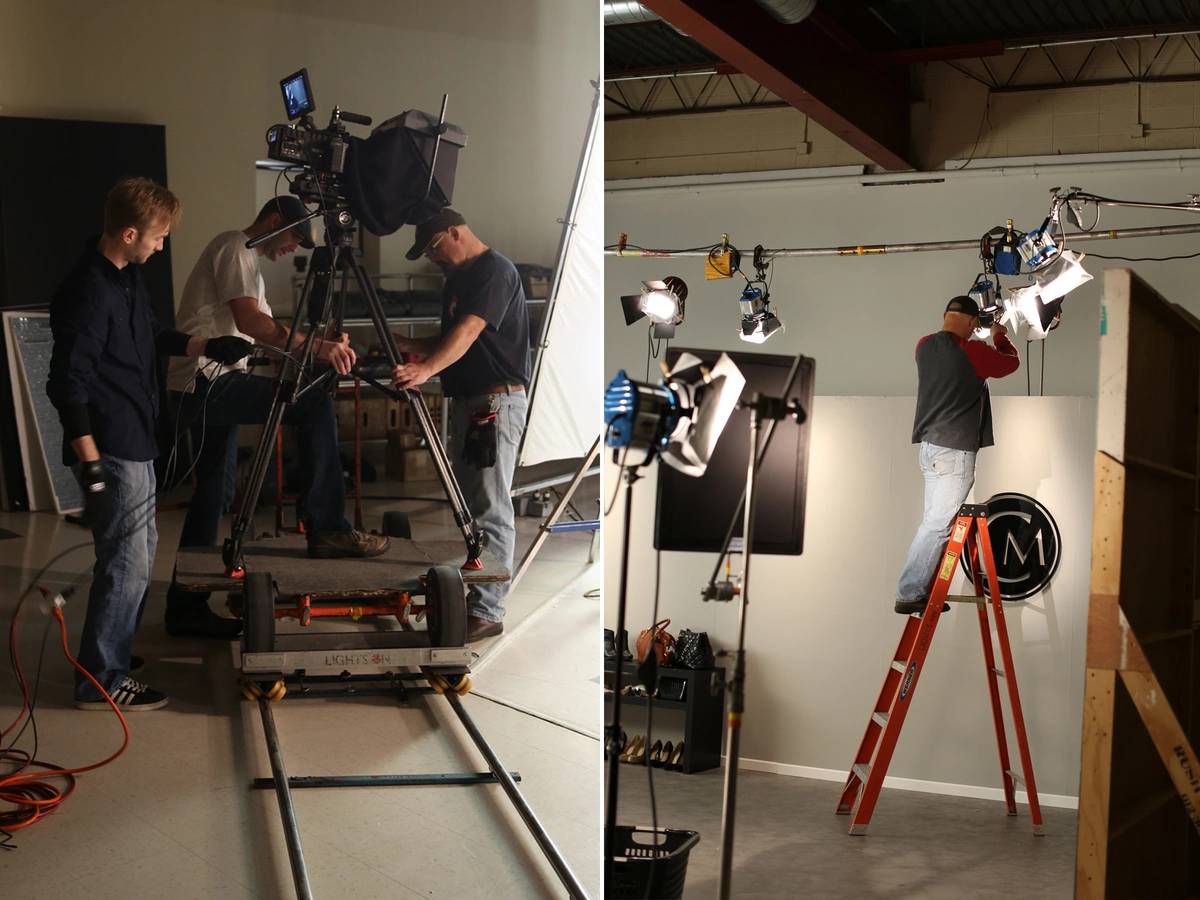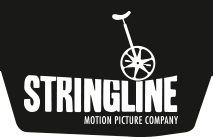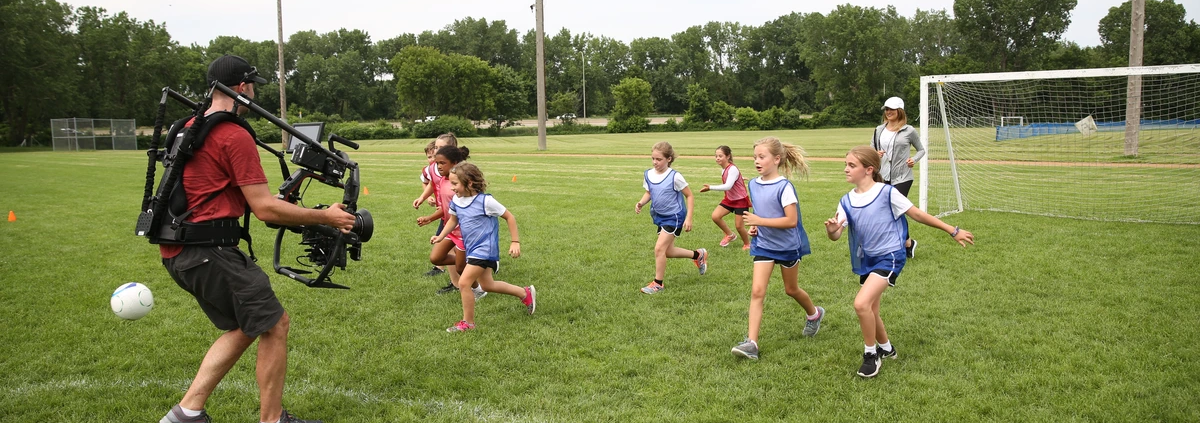Pre-Production: The Definitive Guide For Filmmakers (2023 Update)
You have a fantastic idea for a film or marketing video, and you’re ready to grab a camera and start shooting right now. However, without the proper preparation, you will quickly run into logistical issues, money shortages, and long days on set with a grumpy crew.
So what do you need to do to avoid that? Pre-production.
That’s right; pre-production is an extensive process in the world of filmmaking that can make or break the success of a project. There might be more involved with pre-production than you think, so let’s unpack everything you need to know in this ultimate guide.
Pre-Production: What Is It and Why Is It Important?
Pre-production is the beginning stage of any film project, including:
- Feature films
- Short films
- Music videos
- Commercials
- Marketing or advertising videos

Pre-production is the process of planning and executing every task and detail that must be finalized before shooting begins. Depending on the size and intent of the production, the pre-production process can vary slightly, but almost every project has the universal guidelines we’ll go over today:
- Scripting
- Location scouting
- Costumes
- Props
- Budgeting
- Crew selection
- Casting
- Scheduling
There are a lot of categories that make up the pre-production process, but they all are highly important. Pre-production is essential because it helps ensure the project will go as smoothly as possible by avoiding hiccups, delays, and as many unexpected surprises as possible. It is always better to problem solve before shooting begins, rather than while on set.
A successful pre-production process will help you save time and money— both of which are invaluable in filmmaking.
Build the Story: Scripting
A film script will never be finalized after only one draft. You want to ensure everything in your story works— it needs a natural flow, believable dialogue, and rhythm. Prepare to revise your script several times before it is solidified and ready for filming.
Take time to get rid of or edit everything that doesn’t work. Sort out any hiccups so that everything runs smoothly when filming begins.
Certain projects like documentaries don’t rely on a script. In this case, you will still need to map out the structure of the film. Without a clear outline, it can be easy to get off track and spend time on things that aren’t important to the final product.
Create the World: Location Scouting, Costumes, and Props
Once your script is solidified, you need to take the steps to bring the world alive. Breaking down the set involves finding set locations, costumes, and props that help tell the story in the most accurate way.
Seek Out the Best Locations
Unfortunately, you usually can’t just show up to a location on the day you want to shoot without prior authorization. You will need to get permission to film at each necessary location, whether that be a studio sound stage or outdoor location.
The process of finding and securing locations for filming is called location scouting. Location scouting should take place as early as possible because studio spaces can often be booked out for months.
Many film productions have a dedicated crew member called a location scout who takes the charge on finding and vetting acceptable locations. Details that must be considered when location scouting include:
- Accessibility
- Weather
- Natural lighting
- External noise levels (ex. Is the location right next to a busy highway?)
- Hotels and restaurants nearby
Find or Build Your Costumes
Costumes are a key aspect that helps bring a film to life. It is essential that this component is cohesive and intentional.
- For example, the script takes place during summer in Texas, you don’t want your characters haphazardly dressed in sweatshirts (unless it’s a specific character trait.)
If you have the budget, work with a skilled costume designer. The costume designer will collaborate with other production departments, including hair and makeup, to ensure the film’s visual identity is consistent across the board. The costume designer should also schedule fittings as early as possible so alterations can be made or new pieces can be found before filming begins.
Gather Props
Set dressings, not to be confused with salad dressings, are the small details that make your set look like a true and accurate depiction of what’s written in the script. And, any item a character holds, touches, or interacts with is considered a prop.
Props and set dressing are often very detailed. They can come down to things like:
- The cup a character takes a drink from
- Curtains that get opened or closed
- A pizza box laying on a table
- A pen a character is tapping on their desk
Don’t Go Broke: Budgets and Financing
A good rule of thumb in filmmaking is that you’ll likely need more money than you originally thought. First, figure out how much money you will need in a budget. Then, find ways to raise money.
Set Up a Budget
Your budget will depend on the scope of the project as well as the location. For example, a five-minute short film with two characters set in a coffee shop will cost a lot less to produce than a feature-length film with 20+ plus actors and live animals set in the wild west.
Creating a film budget is essential for when it comes time to pitch your project to investors or public funding. Your budget should include the following expenses:
- Crew and cast salaries
- Equipment expenses
- Meals on set
- Location permits
- Wardrobe, makeup, and props
- Studio rental
- Set construction materials and labor
- Miscellaneous costs
Find Financing
Avoid using your own money to self-fund a film, unless it is a short, low-budget passion project. Instead, seek out financing from other sources like:
- Crowdfunding
- Distribution partners
- Co-producers
- Investors
It’s important not to over or underestimate costs when seeking film financing. For this reason, ensure your budget is accurate and solidified before pitching your project to potential investors.
It Takes a Village: Crew Selection
The best cinematographers still need gaffers and makeup artists on their team, and no film director is complete without a production assistant. That’s right; it’s almost impossible to create a full-fledged film by yourself. You will need to interview and hire essential film crew positions so that all your bases are covered.
Director
The director of the film oversees the creative vision for the project. It is their job to ensure everything is stylistically cohesive throughout the entire film. They have a large say in many production areas, including:
- Casting
- Lighting
- Camera angles
- Set design
- Editing
First AD (Assistant Director)
On larger film sets, there may be multiple assistant directors (ADs). Typically, the first assistant director is a problem-solver and the voice of the director. They keep track of schedules, ensure everything is running on time, and communicate the director’s requests to the rest of the cast and crew.
Producer
The producer of the film is heavily involved with pre-production, but they are less involved with creative details than the director. Typically, the producer or producing team is responsible for:
- Securing funding
- Pitching the story idea to crew members
- Overseeing all film production
- Keeping the project on budget and on schedule
Director of Photography
The director of photography (DP) or cinematographer works closely with the director to physically capture the director’s vision on film. The DP plans the look of every shot, from the lighting to the framing to any camera movement.
The DP has an eye for composition and knows how to tell a fantastic story through a camera shot. Depending on the size or scope of the project, the DP may have camera operators, or they may operate the camera themself. Or both!
Other Department Heads
There are many other essential crew members on a film set and in the pre-production process. These crew positions can include:
- Casting Director: In charge of auditioning and hiring talent
- Gaffer: Lead lighting technician
- Grip: Manages all non-electrical equipment
- Sound Producer: Captures audio on set
- Boom Operator: Controls the boom mic
- Costume Designer: Finds and builds costumes
- Hair and Makeup Designer: Designs and applies hair and makeup
- Production Assistants: Handle any and all miscellaneous tasks on set

Bring Your Characters to Life: Casting
Finding actors to embody the written characters is a fun process that requires an open mind. It is paramount to not get hung up on a super-specific image in your mind. Different actors will bring different characteristics, mannerisms, and energies to the table, and you simply have to find the best actor who you trust to bring your vision to life.
On larger budget films, a casting director will take charge of finding actors through auditions, callbacks, and chemistry tests. You can also utilize the help of a talent agency that will submit actors who they believe meet your descriptions.
Stay Organized: Shot Lists and Schedules
All of this pre-production effort would be in vain if you didn’t implement it when it comes time to shoot. To wrap up all of your pre-production planning, organize everything into shot lists and schedules.
Create a Thorough Shot List
Camera shots in film are different ways to frame the subject or action (close-up, wide-angle, mid-shot, etc). The cinematographer and director collaborate on which shots need to be gathered for each scene, and this coverage is outlined in a shot list.
A shot list is a document that depicts the order of each shot that must be filmed during each scene. The shot list helps keep production on schedule so that a shot isn’t forgotten or too much time isn’t spent on one shot. When the crew knows what shots are next in line, they can keep the ball moving.
A shot list should include details like:
- Shot number
- Shot description
- Shot size (close-up, mid-shot) and angle (eye-level, high-angle)
- Equipment and camera lens
- Location
- Actors
- Sound
- Any additional notes
Shooting Schedules and Call Sheets
You’re almost done with pre-production! Before people can show up on set, they need to have a production schedule to reference. Work your shot list into a rough estimate of how many total days you will need to film. Then, get specific.
Films are rarely ever shot in chronological order. Plan out your filming sequence based on technical requirements, actor availability, and weather predictions. It can be tempting to want to have a tightly-packed time schedule, but make sure you work in enough time for inevitable problem solving each day.
Before each shoot day, send out a call sheet to all cast and crew members. A call sheet should include:
- Production title: Name of the project and the production company’s contact info
- Date and day of the shoot: List the calendar date of filming and how far along in total shoot days (ex. Shoot day 3 of 12.)
- Call times: When various cast and crew members need to be on set
- Weather: Weather forecast for the day, even if you’re filming indoors
- Points of contact: The names and contact information of head crew positions
- Locations: Names and addresses of filming locations plus any parking and entry information
- Shooting schedule: The scenes being filmed, the actors in them, and their location. Also, include a lunch break and estimated wrap time
- Cast and crew list: Names, contact information, and roles of everyone on set that day
- General notes: Any miscellaneous information that everyone should know
Thorough Pre-Production Makes for a Successful Overall Production
Pre-production may seem time-consuming, and well, it is. But the whole purpose of investing time and effort into pre-production is so that actual filming goes smoothly. A successful film shoot stays on schedule and on budget, so the entire production is reliant on a thorough pre-production process.
Even for seasoned professionals, pre-production can feel overwhelming. You never want to forget to include an important detail that could halt production later on.
To ensure a successful pre-production process, work with a video production agency like Stringline Pictures. We know pre-production like the back of our hands and working with us guarantees a successful final product. Send us a message to get started!




